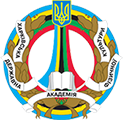- Головна сторінка
- →
- Періодичні видання
- →
- Слобожанський науково-спортивний вісник
- →
- Перегляд матеріалів
JavaScript is disabled for your browser. Some features of this site may not work without it.
Показати скорочений опис матеріалу
| dc.contributor.author | Balaji, Ethiraj | |
| dc.contributor.author | Murugavel, Kamatchi | |
| dc.contributor.author | Rajkumar, Mariyappan | |
| dc.contributor.author | Logeswaran, Subbramani | |
| dc.contributor.author | Veluchamy, Vijayasankar | |
| dc.contributor.author | Devaraj, Chinnathambi | |
| dc.date.accessioned | 2024-04-17T07:58:27Z | |
| dc.date.available | 2024-04-17T07:58:27Z | |
| dc.date.issued | 2024-03-31 | |
| dc.identifier.citation | Ethiraj Balaji, Kamatchi Murugavel, Mariyappan Rajkumar, Subbramani Logeswaran, Vijayasankar Veluchamy, & Chinnathambi Devaraj. (2024). Investigating the Effectiveness of Six-Week Plyometric Training Intervention on Speed-Strength Fitness Abilities of Male Team Handball Players. Slobozhanskyi Herald of Science and Sport, 28(1), 44-50. https://doi.org/10.15391/snsv.2024-1.006 | uk |
| dc.identifier.uri | http://repo.khdafk.com.ua/xmlui/handle/123456789/279 | |
| dc.description.abstract | Background and study aim: Plyometric training is widely acknowledged as an effective option for athletes to attain improved physical performance. A variety of exercises involving the lower limb's stretch-shortening cycle can be used for plyometric training. Numerous studies have examined the impact of plyometric training on various outcomes in various populations over the past few decades. Objective: This study set out to ascertain how a six-week plyometric training programme affected the development of speed-strength fitness measurements in male team handball athletes. Material and methods: Total of thirty intercollegiate level team handball athletes were randomly assigned to 2 groups i.e. plyometric training group with an average age of 20.7 ± 0.7 years, height of 175.3 ±4.2, weight of 75.1 ± 4.1 and BMI of 24.43 ± 0.97; control group with an average age of 20.8 ± 0.7, height of 175.1 ± 4., weight of 74.9 ± 3.1 and BMI of 24.47 ± 1.37. The linear sprint (10 m and 30 m), standing long jump (SLJ), and change of direction sprint (CODS) were evaluated before and after the intervention for thirty male team handball athletes who were randomly assigned to either the plyometric training group (PTG) (n = 15) or the control group (CG) (n = 15). Results: Within group changes were analyzed using paired t-test. The significant differences obtained between the tests in all dependent variables. Conclusion: When it comes to linear sprints, standing long jumps, and change of direction sprints, plyometric training works better than CG. Consequently, adding either plyometric training or sport-specific training to an athlete's regimen may help male team handball players achieve greater speed-strength fitness. | uk |
| dc.language.iso | en | uk |
| dc.publisher | Слобожанський науково-спортивний вісник | uk |
| dc.relation.ispartofseries | 28;1 | |
| dc.subject | plyometric training, team handball, speed, lower limb muscle power and change of direction speed | uk |
| dc.title | Investigating the Effectiveness of Six-Week Plyometric Training Intervention on Speed-Strength Fitness Abilities of Male Team Handball Players | uk |
| dc.type | Article | uk |
Долучені файли
Даний матеріал зустрічається у наступних розділах
-
Слобожанський науково-спортивний вісник
Журнал містить статті, що відображають матеріали сучасних наукових досліджень у галузі фізичної культури та спорту

